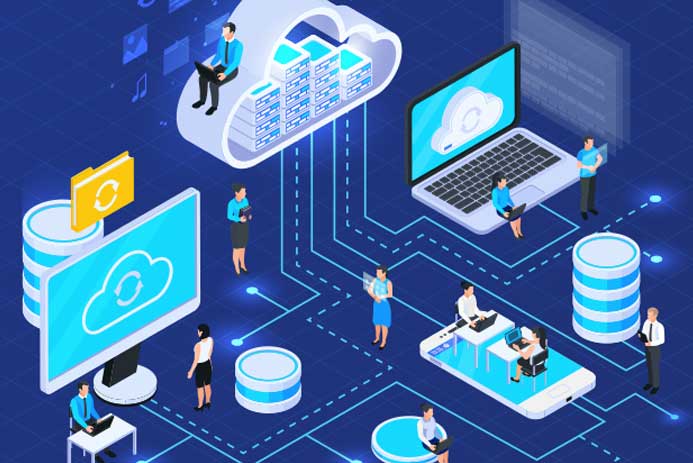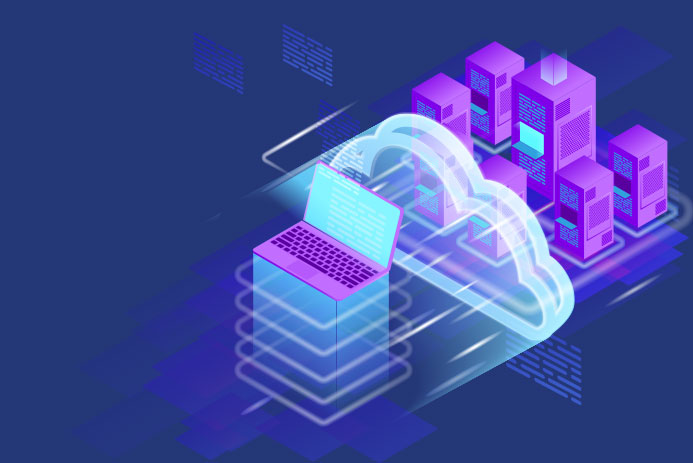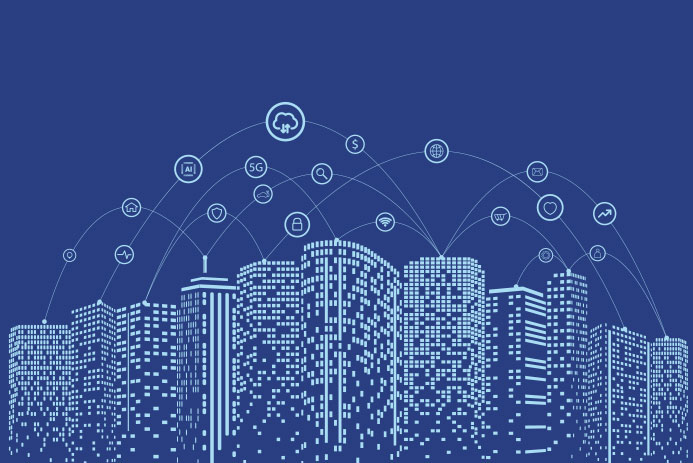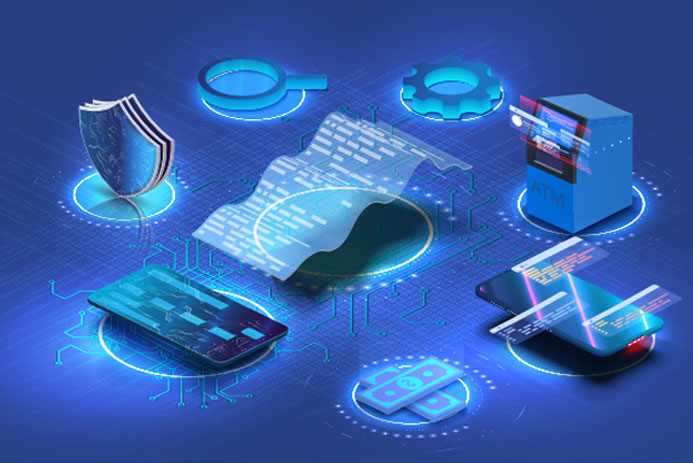During the beginning of the year 2020, the Synergy Group had come out with a detailed review of enterprise IT spending over the last ten years. The analysis revealed that annual spending on cloud infrastructure services had gone up from virtually zero to almost $100 billion. In a recent report in December, the Synergy Group revealed that enterprise spending on cloud infrastructure services (IaaS, PaaS, and hosted private cloud services) and SaaS reached $65 billion in the third quarter, up 28% from the third quarter of 2019. Undoubtedly, COVID-19 drove changes in enterprise behavior and sped up the transition from on-premise operations to cloud-based services. These statistics reveal the unstoppable march of cloud computing as a technology and points out to the fact that the COVID-19 pandemic has only accelerated adoption by a significant percentage.
Today, even as the world waits for the vaccine to be available for the common masses, almost everything has been reset. IT infrastructure and procurement will never be the same again and will have a big impact on the next decade.
From my experience, I would like to point out key trends that I believe would be extremely important for enterprise IT in the next ten years:
1 Every company will use the cloud
The cloud’s growth has been unstoppable, as can be seen from the predictions of independent analysts. The industry estimates further suggests that cloud will be an irreplaceable component of enterprise IT in the future. Even today, the growth of almost every emerging technology depends heavily on the cloud, and is the foundational platform for AI, IoT and Analytics. While each technology can function on-premise too, it is the cloud that gives these technologies the firepower, and this is set to become more prominent in the future. Enterprise IT will be associated with cloud, and every company will use the cloud in one form or the other.
2 The edge will move to the center
It is a connected world, and the future will see an explosion of devices being connected to the Internet. A McKinsey study for example, claims that 127 new IoT devices connect to the Internet every second. Data centers will have to be built keeping this trend in mind, as organisations will look at keeping data close to the location where it is being generated. Also called as edge computing, this requires placing data center nodes as close to the sources of data and content. As more devices such as autonomous cars require real-time access and decision-making capability, it will not be feasible to transmit data all the way to a traditional cloud. With 5G on the horizon, edge computing will remain in high demand, as it ensures low latency and high speed. This is corroborated by the IDC FutureScape report, which states that by 2022, 40% of enterprises will have doubled their IT asset spending in edge locations.
3 An era of joint cloud offerings
The next decade will be defined by multi-cloud offerings, and every customer will look at having different cloud vendors for specific workloads. In 2019, the industry witnessed a landmark alliance between Oracle and Microsoft. This enables customers to migrate or run their enterprise workloads across Microsoft Azure and Oracle Cloud. Customers can have the best of both worlds, by running one part of a workload within Azure and another part of the same workload within the Oracle Cloud. This agreement heralds the arrival of an era where customers will have the ability to run applications that share data across clouds. In the future, we will see more partnerships between fierce rivals.
4 Domain specific clouds will become the norm
Like other industry software such as ERP, cloud will also highly become domain specific. An example of this trend can be seen from the recent launch of the Microsoft Cloud for Healthcare, which is designed to enhance patient engagement, empower team collaboration, and improve clinical and operational data insights to connect data from across systems to predict risk and help improve patient care and operational efficiencies. This industry-specific solution provides integrated capabilities for automated and efficient high-value workflows, and advanced data analysis functionally for structured and unstructured data so that healthcare organisations can truly transform information into insight and insight into action. Going forward, we will see the creation of highly specialised cloud, as specific industries require specialised functionalities. This is also needed in the case of regulated industries such as financial services and telecom, where companies need to comply with specific regulations as required by the authorities.
5 Rise in As-a-Service models
With cloud adoption increasing, there will be a rise in affordable ‘As-a-Service’ models for specific industries. Today, thanks to the cloud, almost every service can be offered in a virtual way. Enterprises will combine intelligent analytics with products, leading to an era of productised services. In the future, almost every machine will have the option of being serviced remotely. Availability of cheap bandwidth coupled with a rise in intelligent devices, will lead to enterprises providing data insights for their devices.
We will also see a rise in industry focused ‘As-a-Service’ models. With no limits of computational power, we will see new industry focused models emerging. For example, small banks or financial firms that do not have the financial ability to invest in emerging technologies such as AI can make use of ‘Banking-as-a-Service’ and consume services in a pay per use model. Similarly, pharmaceutical firms can make use of a service such as ‘Drug discovery-as-a-Service’ to use the technological capabilities of firms to significantly reduce the time for discovering a drug. Similarly, the manufacturing sector can use ‘Manufacturing-as-a-Service’ to reduce their costs for manufacturing. A company called 3D Hubs, for example, has built a common hub for manufacturers to share 3D printers that do not want to invest on their own. In the next few years, the adoption of ‘As-a-Service’ models will be witnessed in every sector.
6 Democratisation of AI
While AI holds huge promise for transforming every possible industry, it is limited by the huge computational power that is required to power AI systems. In 2018, OpenAI, an AI research and development firm, highlighted that that the amount of computational power required to train the largest AI models has doubled every 3.4 months since 2012. Looking at the increased demand for computational power for AI, researchers at the Massachusetts Institute of Technology, recently warned that deep learning is hitting computational limits. However, with more cloud power being available, AI will become truly mainstream. Today, thanks to the cloud, there are no limits. As AI needs more data to learn, a cloud-model can help in ingesting more data, leading to more learning. A cloud-model is also more economical, as it allows enterprises to purchase only the specific computational power they need, even if it is for a short duration.
7 Energy efficiency will be the new benchmark
In the future, energy efficiency will be a competitive benchmark for data center providers. Research firm, Gartner, estimates that power costs will increase at least 10% per year due to cost per kilowatt-hour (kwh) increases and underlying demand. Close to 70% of a hyperscale colocation data center operational expenditure is power, and as demand increases, this number is only set to rise further. From innovative cooling mechanisms to using natural gas, solar or wind energy extensively, the future will see a rise in energy related innovations, as energy efficiency becomes the new benchmark.
8 India will become the global hub for data centers
India already has a huge number of factors that will help it to position itself as a global hub for data centers. This can also be seen from the huge number of investments that this sector has received. A recent report by property consulting firm Anarock, states that India’s data centers received $977 million in private equity and strategic investments since 2008, of which nearly 40% or approximately $396 million were infused between the January-September 2020 period. The report further states that India will see an addition of at least 28 large hyperscale data centers over the next three years. The reasons are clear – India already is well known across the world as a software services powerhouse. It is also home to a large developer population. The Progressive Policy Institute (PPI), India expects the country to overtake the US as world’s largest developer population center by 2024. Data consumption is increasingly rapidly. A fast-rising e-commerce and increasing consumption for OTT services is also fueling the demand for data. When one looks at the current demand, and what it will lead to, you can visualise the huge growth that is going to come for data centers.
How businesses will benefit?
Each of the above trends points out to an era that will increasingly use data insights for improving their own efficiencies and productivity levels. For example, democratisation of AI will level the playing field between large and small players. Companies can use the ‘As-a-Service’ model to reduce the entry barriers and start experimenting with emerging technologies using the foundation of cloud. Financial or technological capability will no longer be the roadblock, and domain experts in sectors such as healthcare or manufacturing can use the potential of AI to solve some of the biggest problems concerning their industries. Simply put, there are no restrictions, and any company or individual can start experimenting with negligible costs.
Data centers have to think beyond ‘infrastructure’
Data center players will also have to be nimble and think innovatively to start offering services and solutions that are beyond the usual IaaS or PaaS offerings. For example, can data center players offer ‘High Performance Computing-as-a-Service’ to say, a small pharmaceutical company? Can data center service providers create unique co-created solutions by taking in active inputs from the community and solving known problems at a price point that they can afford? Can data center players create their own IP that helps their clients improve their energy efficiencies by a significant margin?
The future will belong to those data center companies who can provide answers to such questions or solve the challenges faced by the industry; and service providers that can scale quickly without any limits and provide intelligent outcome-based models that help their clients achieve the business objectives through a portfolio of ‘As-a-Service’ models.
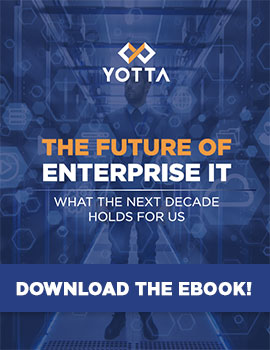
Source: https://www.techcircle.in/2021/01/25/the-future-of-enterprise-it-what-the-next-decade-holds-for-us

















 Back
Back